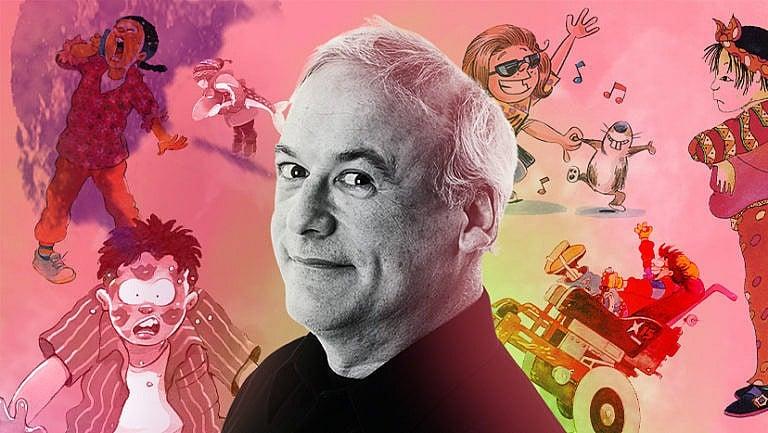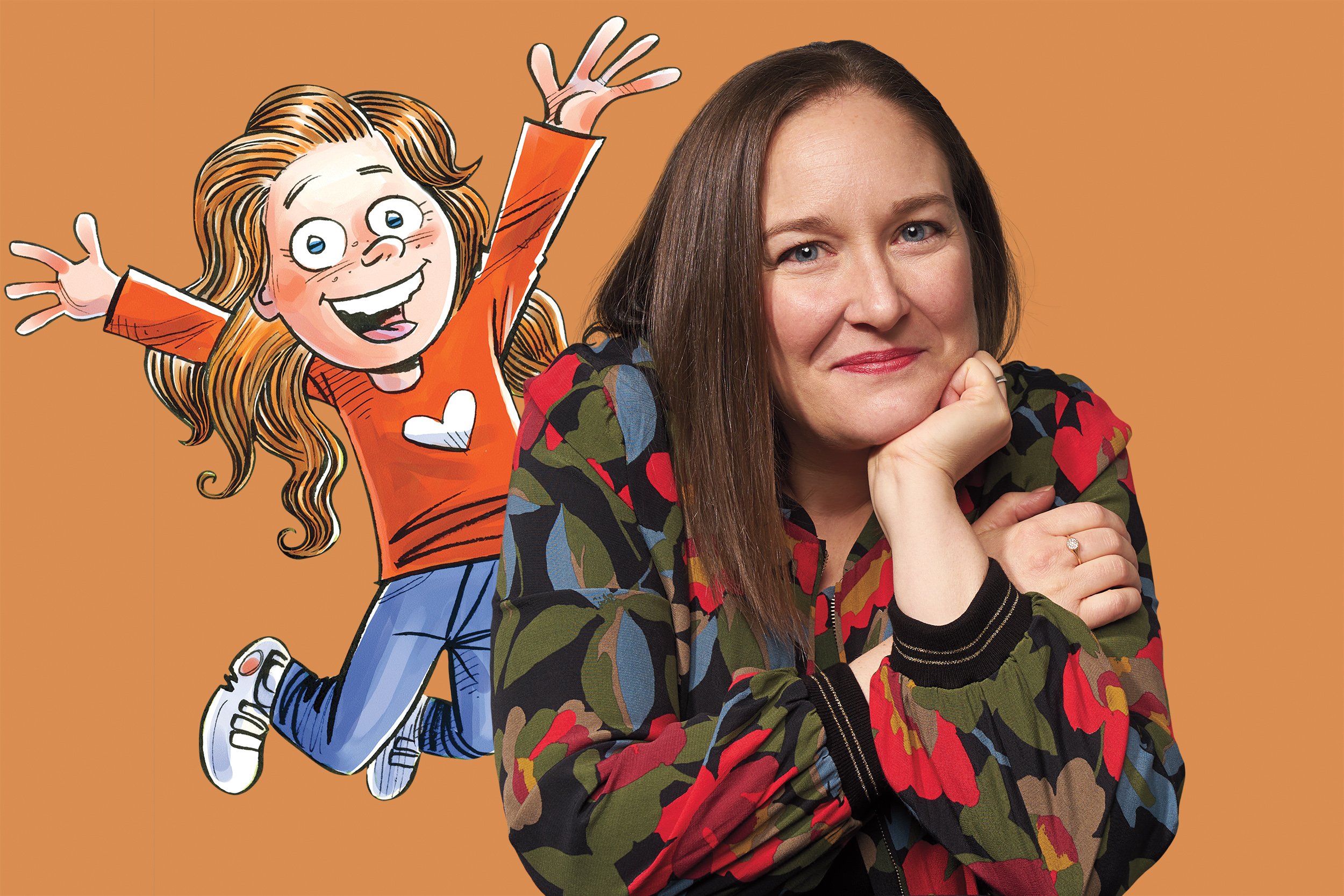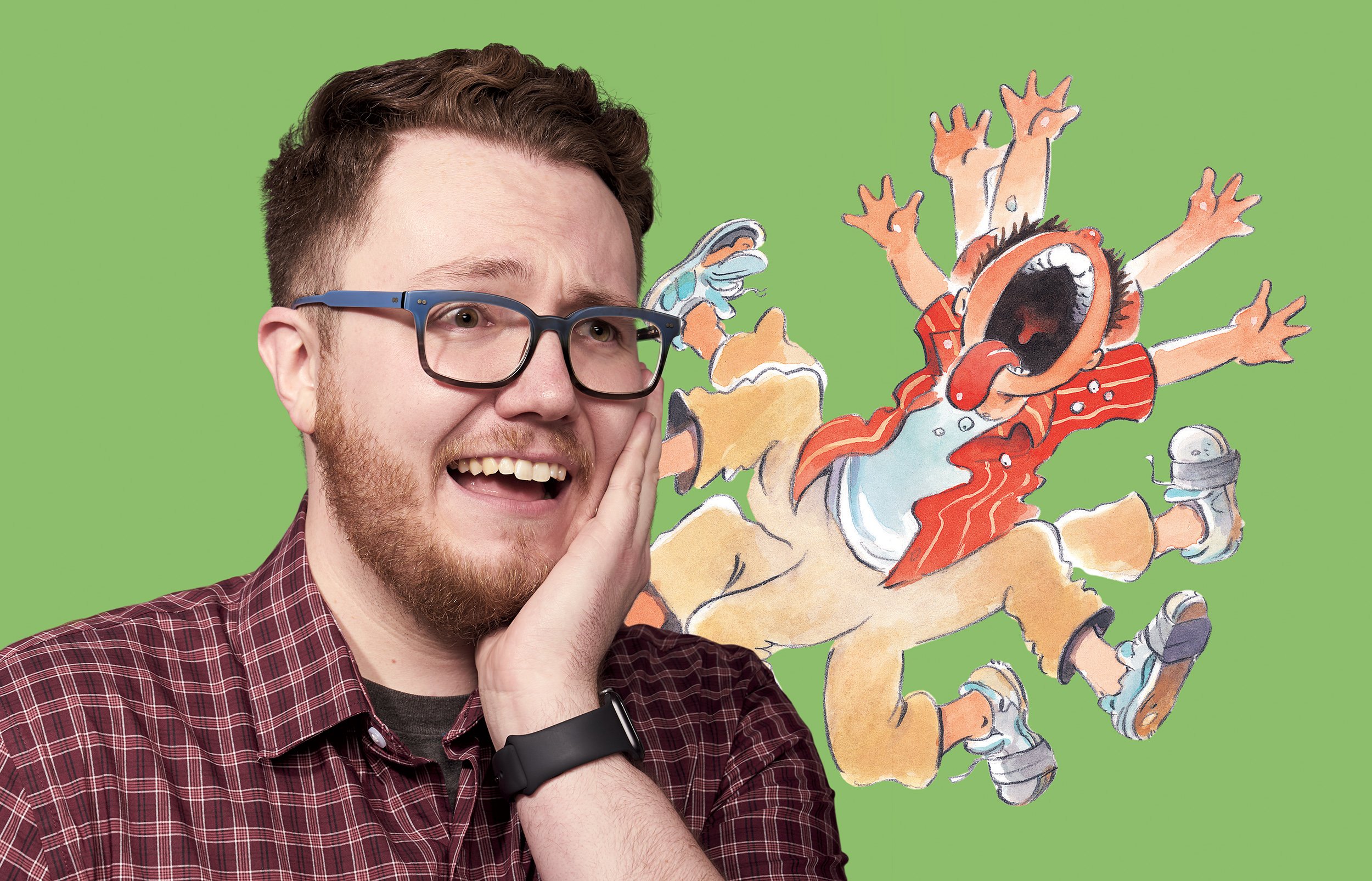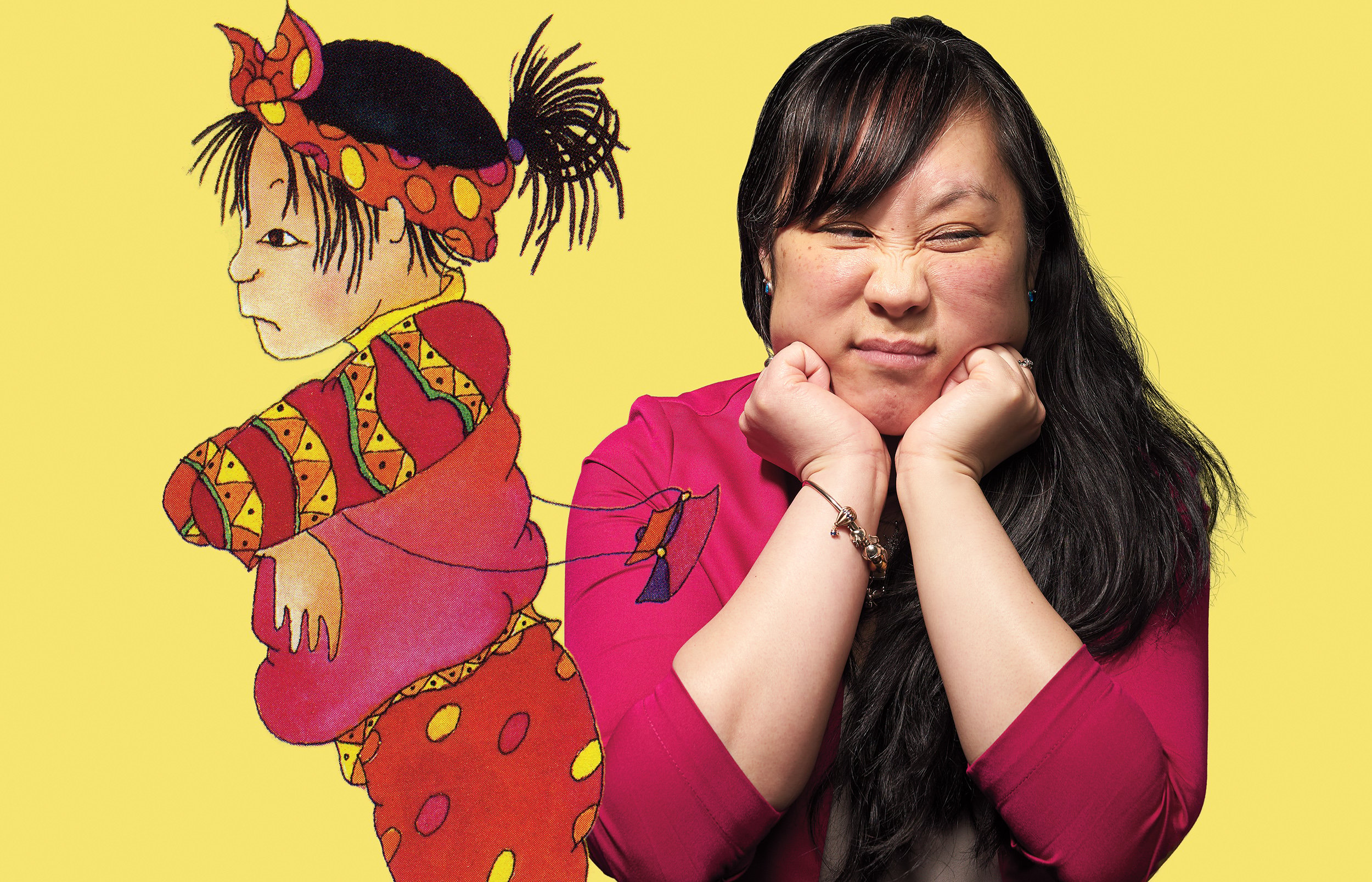Meet the muses behind Robert Munsch’s most iconic stories
They were the kids who inspired some of the legendary author’s best-loved stories. Now, they’re all grown up.

Share
In October 2021, Robert Munsch spoke publicly for the first time about his dementia diagnosis. Munsch, the 76-year-old author of nearly 100 children’s books, told the CBC he was no longer able to write, drive or ride a bicycle. He had stopped visiting kids at their schools, something he’d done throughout his career, all across North America. What he did still have, he said, were his stories. “The stories will be the last thing to go,” he told Shelagh Rogers.
Many of those stories were inspired by children Munsch met on his travels and through correspondence with readers. A picture of a little girl in a hot-air balloon drawn by a reader who longed to escape the everyday monotony of her family’s Chinese restaurant was the spark for Where Is Gah-Ning? The protagonist in I’m So Embarrassed! was based on a boy whose mother practically insisted that Munsch come and visit her son’s Grade 7 class. In the following pages, these and other real-life children who were behind Munsch’s stories share their own memories of the author, and describe how his writing—and being in his books—changed their lives.

(Photograph by May Truong)
Julie Munsch, 45
David’s Father (1983), Makeup Mess (2001) and Finding Christmas (2012)
Robert and Ann Munsch adopted Julie Munsch when she was 5½ years old. David’s Father is about a girl named Julie who befriends a boy named David and discovers that his adoptive dad—a giant—is not nearly as scary as she expected.
Growing up, I didn’t pay much attention to my father’s work. It was just his job. When I was adopted, he only had two books published, so in a way, me and my dad grew up together. Now, I hear from tons of his fans who tell me he was their pen pal. He’s been open to so many people, not just the ones who became characters in his books. To me, he was just my dad, and writing to young readers was part of his job.
My dad told stories so often that sometimes we just wanted him to shut up. He would tell me and my siblings stories while we were sitting at the dinner table. We were just like, “Stop.” Sometimes he would try out stories before bed. That’s probably my favourite memory of my dad’s stories.
MORE: Zarqa Nawaz had a hit show, then a decade-long dry spell. She’s ready for her second act.
People tell me all the time how incredible my dad is and how much he’s impacted their lives. Nobody gets tired of hearing how great their parents are. But the thing I’m most proud of isn’t how great he is. It’s how open he’s been about his flaws. I’m proud of what he’s done for me, as his daughter—helping me deal with my past and teaching me not to be ashamed of anything.
My younger brother and younger sister were adopted when they were babies. It was different for me because I was older when I was adopted. I had a traumatic childhood. At the time, I felt that adoption was the worst thing that ever happened to me. My dad came up with the story in David’s Father to help me feel better. In the book, a boy named David—inspired by my Grade 2 boyfriend, also named David—is adopted by giants. It was a metaphor: the parents were depicted as big hairy giants because I didn’t want new parents.
When I got older, I realized how sweet it was for him to try to help me process what I was going through by writing that story. I’m aware now that not many 5½-year-old kids get adopted. My parents saved me, nurtured me, loved and guided me.
I hardly read my dad’s books to my own kids. I’ve just heard them all too many times. But I don’t want my children to miss out on the experience of hearing my father’s stories, so I occasionally pull them out. When I read them, I hear his cadence, his rhythm, his mannerisms—the loud noises and everything he does when he’s telling a story.
About three years ago, my daughter picked Love You Forever from the bookshelf. It wasn’t until the ending that I started crying. I finally understood the story.

(Photograph by May Truong)
Cassandra Cautius, 35
School Rules! (2020)
Almost 30 years ago, Robert Munsch asked Cassandra Cautius what made her interesting. Her answer led to the story that became School Rules!, a book about a girl who happily stays in her classroom after the bell rings and the lights go out so she can keep reading and playing and learning.
When I was in Grade 2 in 1993, my aunt and uncle were Robert Munsch’s neighbours in Guelph. They knew I was a big reader and that I loved all of his books, so they arranged for Bob to surprise me when I went to visit them. We posed for a photo together in the foyer of my aunt’s house and he gave me an autograph. I was wearing one of those dorky outfits that my parents clearly dressed me in.
RELATED: Heather O’Neill on Sarah Polley
During our meet-and-greet, he asked me, “What is the most interesting thing about you?” It’s a pretty big question for a seven-year-old. I said that I loved school. Most kids don’t feel that way, so I decided that was what made me interesting. Soon after I met him, he wrote a transcript of School Rules! I guess he gave it to my aunt, who gave it to me.
I heard from Scholastic in 2019, when I was pregnant with my daughter, Annie. They emailed to say the story he wrote for me many years ago was going to be published in a book. It was scheduled to come out around Christmas, which was when my daughter was due. It felt like a birthday gift to her. It was overwhelming. I had met him a generation ago, and now the story was going to be published just in time for my own daughter to be born. I’ll get to flip through the pages and point out Mama and Oma. My daughter’s aunt, my sister, is the little blond baby in the book. When the book was published, Bob autographed a copy for me. He wrote “To Annie.”

(Photograph by May Truong)
Andrew Livingston, 32
I’m So Embarrassed! (2005)
Munsch had the idea for I’m So Embarrassed!, a book about a boy who dreads his mother’s public displays of affection, within minutes of meeting Andrew Livingston in 2003.
My mom was my teacher for about four years when I was attending kindergarten and elementary school in my hometown of Latchford, which is just south of Cobalt, Ont. Back then, Robert Munsch had partnered with Zoodles, the animal-shaped canned pasta, to do a story-writing contest. The class that wrote the winning story would get a visit from him at their school. My Grade 4 class won second place in that contest.
For a long time afterwards, my mom kept writing to Robert and asking him to come to our school. My mom is very passionate, and she loves her kids. She just wanted us to meet Robert Munsch. She had her mind set on getting her “Munsch moment,” as she calls it.
A few years later, when I was in Grade 7, my mom wrote and told him the second-place Zoodles kids were about to graduate. She said, “This is your last chance.” She practically gave him an ultimatum. That’s my mom.
He wrote back and agreed to come, which was the weirdest thing to me—I didn’t expect my mom’s constant invitations to work. The closest airport is in North Bay, an hour and a half drive away from us. He flew from his hometown of Guelph to North Bay, and my mom picked him up from the airport. I went too, along with some friends.
My mom saw his plane landing and said, “There he is!” She ran onto the tarmac and helped him get his luggage. I thought, Oh, dear God, stop. I was in Grade 7 so this was still very embarrassing. Robert almost immediately asked me if she did this often. I said, “Yes.”
READ: With ‘Turning Red,’ Domee Shi wants to tell the story of your childhood
We got into the car and went to a Tim Hortons. While we were sitting in the booth, he told us the story that became I’m So Embarrassed!,which was based on my mom’s exuberance and my embarrassment at the airport. Within 10 minutes, he had already done the entire story in his head.
In 2005, when I was 14, he called and said, “Do you remember the story I made up about you? Well, we’re going to turn it into a book.” My mom was listening on the other line and she just kept talking. I said, “Let me talk, it’s my book!” She was still embarrassing me, even on the phone.
Anyone who knows me knows I hate being in the spotlight. I had to prepare myself for the attention that would come with having a Robert Munsch book about me published. Now that I’m older, I’ve realized you just have to embrace the embarrassment. The book helped me a lot, and so did my mom.

(Photograph by Becken Photography)
Cheryl Allen, 41
Give Me Back My Dad! (2011)
Cheryl Allen heard Munsch tell the story that would become Give Me Back My Dad!, which chronicles an ice fishing trip in which the fish catch the fisher, years before the book was published.
I was 11 years old when I met Robert Munsch in 1991. My family lived in Rigolet, an Inuit community on the coast of Labrador, and he stopped in our town. My dad was a life skills teacher at our local school. Robert wanted to experience going out on the land like we always did, so my dad volunteered to take him on an overnight ice fishing trip at our cabin. Ice fishing was something I did with my dad all the time when I was a child. A few other students from our school came on the trip, too. I remember drilling through the ice, and it being very cold.
When we got back to town, there was a Labrador tent—a white canvas tent that’s sort of like a portable cabin—set up. We chopped wood from the trees and laid the pieces on the snow, and that served as the floor of the tent. People put their sleeping bags and other things on top. A portable stove went inside to keep it warm.
After everyone gathered inside the tent, Robert told the story that became Give Me Back My Dad! We all thought it was very funny. Everybody was laughing. In Give Me Back My Dad!, a fish catches my dad and brings him underwater. The next day at school, Robert told the story again to a class full of students. Everybody loved it. I remember feeling kind of proud that the story was about me.
The book came out years later, in 2011, after the Pick-a-Munsch contest Scholastic Canada held in fall 2010. I was very excited when I heard the story was going to become a book. By then, I had two daughters of my own. My eldest daughter, Megan, who was eight at the time, was very proud that her mom and grandpa were in a book. After it came out, Robert came to visit us in our hometown again. My daughter and I went on a helicopter ride with Robert, to give him a tour of the town and Goose Bay. The next day, we invited him over to my grandparents’ house. My grandmother prepared a traditional meal with goose, vegetables and steamed molasses pudding. Robert tried the different parts of the goose that we eat, like the head and the feet. He loved it.

(Photograph by Janick Laurent)
Lauretta Reid, 29
Zoom! (2003)
Zoom!, a book about a girl who wreaks havoc in a “nice, new 92-speed, black, silver and red dirt-bike wheelchair,” was based on a story written at the request of six-year-old Lauretta Reid.
Robert Munsch was my favourite author. My mom was attending a conference for work, and Robert happened to be a guest speaker at the event. I had written him a letter to ask if he would be willing to come up with a story for me about a kid who uses a wheelchair, like I did. I included a photo of myself in the letter and my mom passed it on to him.
All the stories I had read about kids with disabilities had some sort of moral to them—“I can do what you can do” sort of thing. Stories like that make it seem as if the disability is the most important thing about the person. It’s a positive message for kids, but I just wanted to read a fun story about a person with a disability.
A few weeks after my mom gave Robert my letter, we received the first draft of the story in the mail. I didn’t think it would eventually be published as a book. At one point, we attended a live storytelling event and he recognized me in the audience. He said if he ever turned the story into a book, he would dedicate it to me. Every once in a while, we would get a new draft in the mail. He would include a note saying he had made a few changes and ask what I thought of them.
In 2003, Robert emailed to say the story was going to become a book, and asked if he could come meet me and my parents to take photos. He spent the weekend with us and visited my school. He was incredibly friendly and giving. Everything that shines through about Robert in his books is exactly who he is.
After the book came out, I attended lots of signings, interviews and fundraisers. That experience opened doors for me. It was surreal. Suddenly, I was going places and getting recognized as the girl from Zoom! It was as though people saw me in a different light. I wasn’t just a person in a wheelchair anymore; I was the kid in the book. It didn’t matter anymore that I have a disability.

(Photograph by May Truong)
Gah-Ning Tang, 40
Where Is Gah-Ning? (1994)
Gah-Ning Tang, who met Munsch in 1991, inspired Where Is Gah-Ning?, in which an adventure-seeking eight-year-old girl hatches a plan to escape her small town and set out for the bright lights of Kapuskasing, Ont.
I grew up in Hearst, Ont., a town in northern Ontario with a population of about 5,000. It was such a small town that we didn’t have a movie theatre or a McDonald’s. When I was a kid, I would always be excited to go with my cousins to Kapuskasing, 100 km from Hearst, for a movie and Chicken McNuggets because I didn’t want to be in town at our family restaurant. My uncle King owned King’s Cafe, which was one of only two Chinese restaurants in Hearst at the time, for 46 years.
I wrote about that in my first letter to Bob in 1989. I drew a picture of me in a hot-air balloon that I vaguely remember being pink and red. He wrote Where is Gah-Ning? based on that picture, but he changed the hot-air balloon to 300 balloons. In the book, my parents went searching for me after I went to Kapuskasing. Part of the joke in the title was that as a child, I was always curled up and tucked away in a corner somewhere, and my mom was constantly looking for me.
I wrote him letters nearly every two weeks as a child. Most of them were written on the back of the paper placemats that our restaurant used. They weren’t the new ones, either. They were the slightly used ones that came back from the tables, which my mom would tell me to use. They were blank on one side and had pink and red advertisements for local businesses printed on the other side. I wrote to Bob about my dreams of becoming an illustrator, and later a writer; he wrote back encouraging me to pursue my dreams.
The first time I met Bob, I was 10 years old. I had been writing to him for two years. Bob was known for dropping in unannounced on schools when he travelled for shows, and that year he decided to come and visit my school. I was called out to the staff room where Robert Munsch was waiting. I was surprised but also very shy. The next thing I knew, I was spending the whole day with him. I was hanging out with him in the gym and the library in between his storytelling sessions in the school. I don’t remember what we talked about. I probably just rambled.
As I got older, I would write to him about the stories I was working on. Over 32 years of letter writing, we started calling each other family. I actually write the letters to Uncle Bob and Aunt Ann, Munsch’s wife. Lately, I’ve been writing to Bob more because of the dementia diagnosis. Ann let me know that it makes him feel better. Sometimes I forget he’s this larger-than-life storyteller. To me, he’s just Bob.